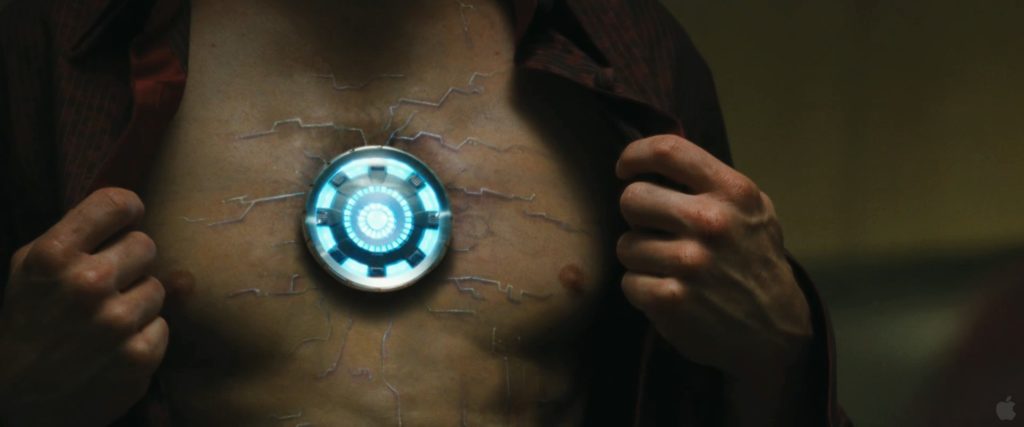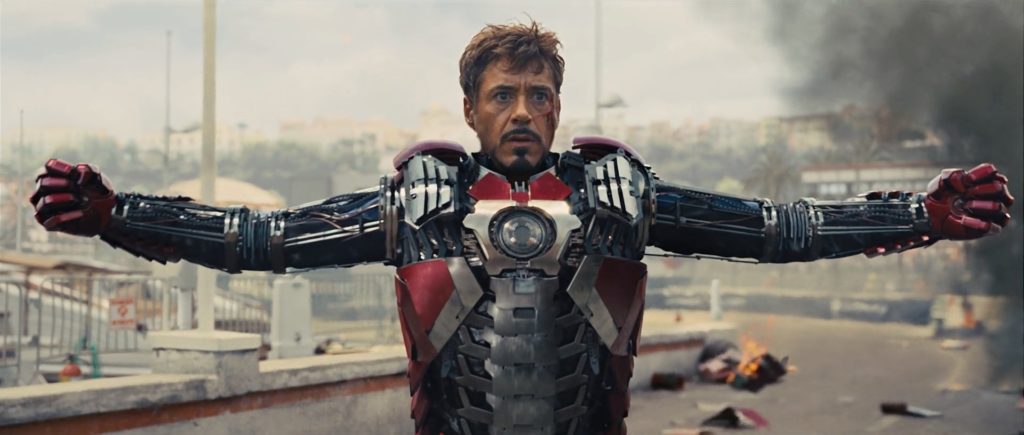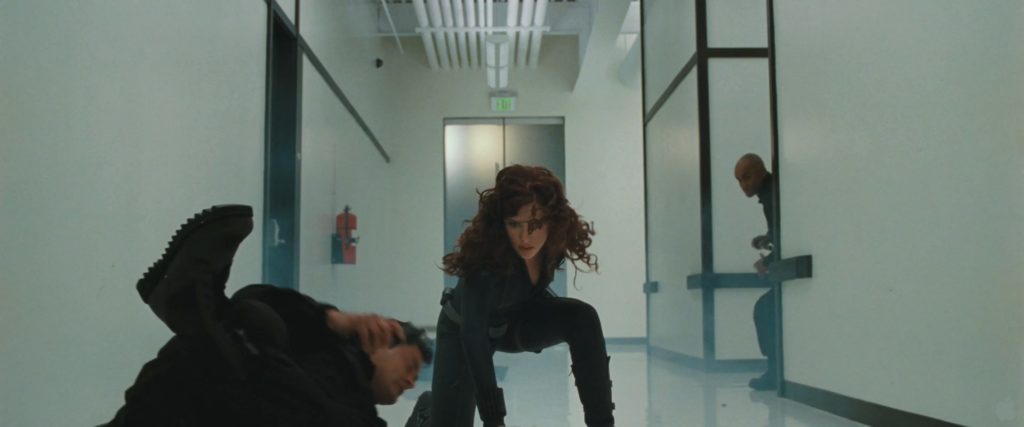In this weekly series, we chronicle the long road undertaken by the Marvel Cinematic Universe movies to arrive at Avengers: Infinity War. We introspect and discuss the movies from a critical and commercial standpoint while also considering the development efforts that went behind them. These articles may be occasionally sprinkled with spoilers so please make sure to skip the relevant sections when reading.
This post is about the 2010 movie Iron Man 2, the third chapter in the Marvel Cinematic Universe.
By now Marvel Studios had kick-started their vision of bringing their 1960s superhero team-up to the big screen. With its first two attempts making a cumulative total of $850 million, not counting sales from home rentals, the studio was in a much better position to move ahead with its plan; the plan that Samuel L. Jackson’s Nick Fury hinted at when he showed up at the end of Iron Man asking Stark to be a part of The Avengers initiative. But until this point, Marvel’s cinematic attempts had largely kept to themselves, save for very subtle references and a small cameo. With all eyes on Iron Man 2 after the success of the first one, Marvel saw this as an opportunity to introduce as many elements of their shared universe as possible in order to bring audiences fully on board with their vision for the future.
The end result of this strategy is a sequel that, more than standing out as its own movie, serves as a gigantic stealthily designed connective tissue to propel Marvel’s shared universe elements. Thus, S.H.I.E.L.D. now has an expanded presence in the movie with director Nick Fury inexplicably appearing in the middle of the plot bouncing jokes off Tony Stark. Not just that, Fury also plays a pivotal role in help Stark figure out his central conflict. Agent Phil Coulson accompanies Fury for a scene or two, ending up being reassigned to New Mexico to slip in a tease to Marvel’s next movie. Another agent Natasha Romanoff a.k.a. Black Widow is brought into the fold of things, acting as Fury’s eyes and ears. And there are some rather silly and sly references to Marvel’s First Avenger thrown in for good measure.
The problem with these elements is not really in them being present but in how inharmonious they feel compared to the rest of the movie. Scenes and references seem to pop out of nowhere, as if added as an afterthought. Fury’s grand entrance, catching a helmet-less Stark munching on a doughnut off-guard is where you feel it the most. With so much slammed in to promote their shared universe, this movie almost reminds me of DC’s recently released Justice League. It’s hard to imagine Marvel suffering from problems similar to its competitor but these were certainly among some of the company’s unfavorable moments.
Of course, with all the criticizing and ranting I’ve been going on about, it may seem as if Iron Man 2 has nothing to offer as a movie on its own. That is certainly not the case. Seeking inspiration from the famous Demon in a Bottle storyline, the plot sees a Stark plunging into alcoholism to enjoy what he believes to be the final days of his life. The Palladium used in powering the miniaturized Arc Reactor in Stark’s chest which in turn powers the Iron Man suit is slowly poisoning him and being a rare element, it has no known alternative. Unwilling to let others suffer his agony, Stark metaphorically keeps this secret close to his chest.
 Death is not the only thing bugging the billionaire. His proud declaration at the end of the first Iron Man has attracted all sorts of problems. For one, the US government is pressurizing Stark to hand-over the Iron Man tech so it can be weaponized by the military, saving lives. Stark, having already been through that route and seeing first hand what his stuff can do in the wrong hands relents. He publicly humiliates his rival Justin Hammer in a Senate hearing when he exposes the ineptness of the Iron Man clones that Hammer Industries is working on; it solidifies Stark’s argument that the tech is years away from spawning similar clones from terrorists.
Death is not the only thing bugging the billionaire. His proud declaration at the end of the first Iron Man has attracted all sorts of problems. For one, the US government is pressurizing Stark to hand-over the Iron Man tech so it can be weaponized by the military, saving lives. Stark, having already been through that route and seeing first hand what his stuff can do in the wrong hands relents. He publicly humiliates his rival Justin Hammer in a Senate hearing when he exposes the ineptness of the Iron Man clones that Hammer Industries is working on; it solidifies Stark’s argument that the tech is years away from spawning similar clones from terrorists.
Then there’s Ivan Vanko, the Russian scientist played way too much subtly by Mickie Rourke. As it turns out, his father Anton Vanko shares a history with Tony’s father Howard Stark; they developed the Arc Reactor technology together. Anton however wanted to make a quick buck from the tech by selling it to the Russians which resulted in the two falling out, leaving the Russian scientist to die in poverty. Ivan vows to take revenge. His plan includes building an Arc Reactor of his own to power his whips, making it to the Grand Prix in Monaco, and smashing Stark’s car in half forcing him to don the Iron Man suit. Rather than kill the man in armor, Whiplash wants to humiliate him. Exposing Iron Man as an antique is a goal that both Vanko and Hammer share, resulting in them teaming up and leading into what is ultimately an exhilarating climactic sequence at the Stark Expo.
The movie certainly has its high points and chief among these is action. Two major action sequences form the center piece of the movie. The first of these is the skirmish at the Monaco Grand Prix that gives us a first look at both a fully formed Whiplash and Iron Man’s Mark V Briefcase Armor. It is filmed with such ingenuity that only upon watching the DVD extras do you realize that a very small portion of the sequence was actually shot on location, with the remainder being a set composited with CG elements. The second sequence comes towards the end when Vanko takes over Hammer’s drones and sends them bonkers all over Stark expo. What follows is an aerial chase around the vast Expo area that very satisfyingly leads into a park fight where Stark and Rhodey team up to fight the drone bots. Having gained loads of experience with visuals in Iron Man, Favreau’s expertise coupled with the talents of Industrial Lights and Magic make all the shots indistinguishable from reality. The use of motion capture to digitally create the bottom half of, or at times the complete suit gives its actors a lot more room for movement and yet doesn’t detract visually. You really forget where practical ends and digital begins.
 Despite featuring most of the same cast, Iron Man 2 lacks the character depth that made Iron Man such a standout. The conflict is broader this time with the sequel eschewing the more personal approach of the first movie in favor of large-scale battles as a precursor to what would follow. And even though this is a fictional movie about a man capable of creating a suit powered by an energy source in his chest, some sequences really stretch our suspension of disbelief; Stark’s solution to his Palladium problem is laughable at best, as is Vanko’s emotional outburst preempting the movie’s opening credits upon his father’s demise. So yes, while it still makes for good popcorn entertainment, it doesn’t really go much beyond that.
Despite featuring most of the same cast, Iron Man 2 lacks the character depth that made Iron Man such a standout. The conflict is broader this time with the sequel eschewing the more personal approach of the first movie in favor of large-scale battles as a precursor to what would follow. And even though this is a fictional movie about a man capable of creating a suit powered by an energy source in his chest, some sequences really stretch our suspension of disbelief; Stark’s solution to his Palladium problem is laughable at best, as is Vanko’s emotional outburst preempting the movie’s opening credits upon his father’s demise. So yes, while it still makes for good popcorn entertainment, it doesn’t really go much beyond that.
The principal cast is completely in their element, and by that we’re referring mainly to Robert Downey Jr. and Gwyneth Paltrow. Downey Jr., on his way to a historic arc as the armored Avenger, is now more comfortable in his skin, bouncing quips off his cast members. Paltrow too has segued into the role of Pepper Potts and with her appointment as the CEO by a paranoid Stark, shoulders a lot more responsibility. Don Cheadle, infamously replacing Terrence Howard who a then parsimonious Marvel wouldn’t ask to reprise the role supposedly because of his high salary demands also finds himself at home in the role of Stark’s best friend and confidante Lt. Col. James Rhodes a.k.a. War Machine. Given that he had mere hours to accept the role, he does a fine job with it, his introduction by the lines “It’s me, I’m here. Deal with it.” serving as a metaphorical breaking of the fourth wall. In that moment, Rhodey’s talking to the audience in a tongue-in-cheek fashion as much as he quotes his line to Stark.
The new entrants are fairly competitive. Justin Hammer played flamboyantly by Sam Rockwell provides a nice contrast to Stark’s character and one gets the impression of a wannabe Stark at play here. That Rockwell wanted to play Stark’s role in the 2008 movie only reflects in his performance as Hammer. Rourkey gives a, dare I say, fair performance as Vanko although I did find him to be merely going through the motions in a lot of cases. Despite his performance being praised, I failed to see anything special in it. Samuel Jackson owns the role of S.H.I.E.L.D. director Nick Fury and is the Ultimate version come straight to life. Garry Shandling has fun with the role of Senator Stern in the two scenes that he’s given. Finally, Scarlett Johannson enters the scene as S.H.I.E.L.D. agent Natassha Romanoff who goes on to assume the mantle of Black Widow towards the movie’s final moments even though that name’s never spelled out loud.
 One of the pleasantly surprising things with the Iron Man movies is how much they manage to pack in just over a 2 hour run time. With all the new characters, subplots and effects laden sequences, what could’ve ended up being a 2 hour 20 min film under less experienced hands, ends up being smoothly cut down to 2 hours 5 mins by editors Dan Lebenthal and Richard Pearson. Favreau has really mastered the technicalities of movie-making and spares no expense in making every frame of Iron Man 2 look rich and vivid; for a Marvel movie to spend $200 million in production costs back then was a huge deal and a giant leap from the $140 million Iron Man.
One of the pleasantly surprising things with the Iron Man movies is how much they manage to pack in just over a 2 hour run time. With all the new characters, subplots and effects laden sequences, what could’ve ended up being a 2 hour 20 min film under less experienced hands, ends up being smoothly cut down to 2 hours 5 mins by editors Dan Lebenthal and Richard Pearson. Favreau has really mastered the technicalities of movie-making and spares no expense in making every frame of Iron Man 2 look rich and vivid; for a Marvel movie to spend $200 million in production costs back then was a huge deal and a giant leap from the $140 million Iron Man.
Iron Man 2 would end up receiving anywhere between mixed to positive reviews from critics, grossing something to the tune of $623 million. Not a very giant step-up from the first Iron Man but still a gross big enough to put a big stamp of success on Marvel’s repertoire. If there was any doubt as to whether Marvel had arrived, this movie’s box-office would erase it. Despite the often tepid reception compared to the first movie that it received from some critics, Marvel was here to stay and so was its film-universe.
With a desire to use its properties to the fullest, Marvel added a post-credits scene in the movie to serve as connective tissue to its next in line release. The sequence was simply a scene shot from Marvel’s next release that saw the discovery of a hammer in New Mexico by Agent Coulson. It was a bold statement to make; no matter the outcome of the movie, Marvel was adamantly moving ahead and making a next one.
And so, after earth, we were in for a taste of what lied beyond.





